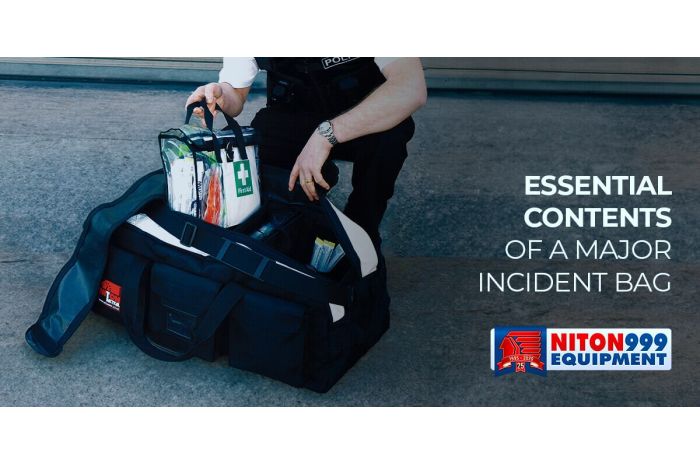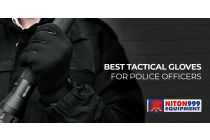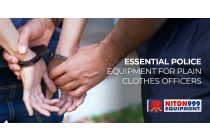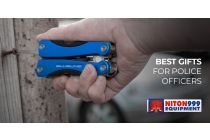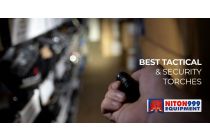Responding effectively to a major incident requires preparation, knowledge and the right tools and equipment.
From large-scale accidents to floods, fires, chemical spills, terrorist acts or explosions, major incidents are diverse and require a wide range of tools and preparation for various circumstances.
A well-packed major incident bag is a foundational component of this readiness.
This guide will explore the essential contents of such a bag, ensuring that officers or first responders are equipped to address varied situations ranging from medical emergencies to operational needs.
Key Items to Include
A well-packed major incident bag is the cornerstone of effective response during emergency situations. It’s a compact repository of tools and equipment necessary for the challenges that officers might face in critical situations.
Before we begin, equip yourself with the best major incident bags on the market to hold all of your equipment safely.

Above: Niton Tactical Major Incident Bag
Naturally, the precise contents of such bags vary, but consider packing the following:
Documentation
Accurate record-keeping and the ability to quickly jot down information are often underrated but can be crucial during emergencies.
- Notepads: These are essential for recording real-time events, descriptions or noting down key information from witnesses or involved parties.
- Pens: While it might seem trivial, a good-quality, all-weather pen can make all the difference, especially in wet or adverse conditions.
- Incident Report Forms: Pre-structured forms can expedite the documentation process, ensuring that all critical data points are captured systematically. These forms can also aid in post-incident reviews, debriefings, or any subsequent investigations.
Hi-Visibility Gear
Hi-vis gear is essential for major incidents.
- Tactical Vests: Tactical vests have a high capacity for transporting numerous items.
- Standard Hi-Vis Vests: Hi-vis vests come in numerous forms, with both lightweight and heavyweight models.
Communication Devices
Communication is everything, especially during crises where collaboration between multiple teams is paramount.
- Battery-Powered Radio: A battery-powered radio ensures that officers remain in touch with the command centre and each other.
- Satellite Phone: In some scenarios, satellite phones can be the lifeline in remote locations or during severe disruptions, allowing communication even when other networks fail.
- Extra Batteries and Power Bank: Given the reliance on electronic devices, backup power sources are not just convenient but essential. Ensuring that these are charged and regularly checked for functionality is equally important.
Torches and Illumination
Visibility is often compromised during major incidents due to power outages, nighttime operations or environmental factors.
Being stuck in the dark without appropriate illumination is worth avoiding at all costs.
- Torch: A robust, water-resistant torch/flashlight with adjustable brightness levels can be indispensable. It's not just about seeing but also about being seen by others, which can prevent accidental collisions or misidentifications.
- Headlamps: These provide hands-free illumination, which is especially useful during search and rescue operations, medical interventions, or when multitasking is required. Opt for ones with adjustable bands and tilt functions to cater to varied needs.
- Glow Sticks or Flares: These can be used to mark locations, direct traffic, or signal for help. Their advantage lies in their long shelf life and ability to function without batteries.

Above: Niton Tactical Original II Torch
Vital First Aid Contents
Ensuring immediate medical attention is vital for major incident response.
A major incident bag with essential first aid contents is a critical tool for first responders.
Basic First Aid Kit
Here are some essential first-aid kit items:
- Bandages: Different sizes and types, such as adhesive bandages for small wounds, triangular bandages for slings, and elastic bandages for sprains.
- Gauze and Adhesive Tape: Sterile gauze pads can be used to cover wounds while the tape secures them in place. Non-adhesive dressings are also useful for burns.
- Antiseptics: Wipes or solutions like hydrogen peroxide or alcohol are crucial to disinfecting wounds and preventing infections.
- Scissors and Tweezers: Medical-grade scissors can cut through clothing to access wounds, while tweezers are indispensable for removing debris or splinters.
- Pain Relievers: Over-the-counter pain relievers can alleviate pain or reduce inflammation.
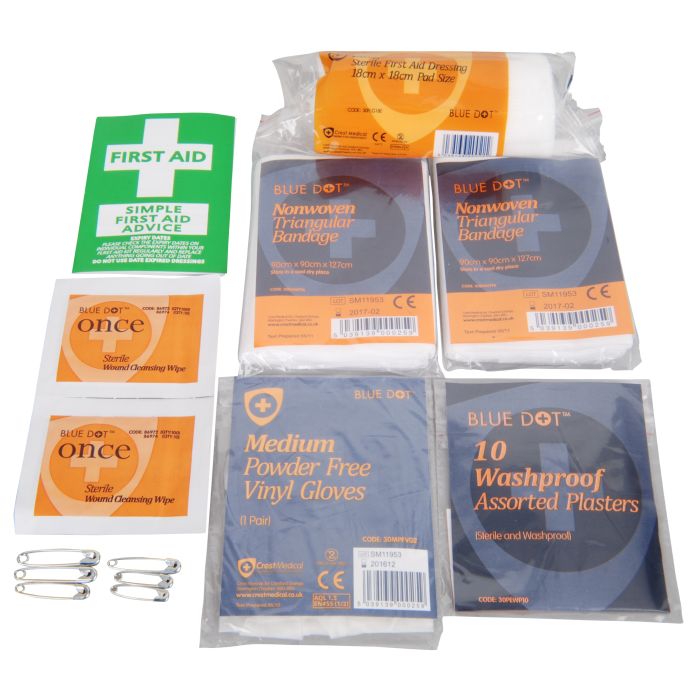
Above: An HSE One Person First Aid Kit
Trauma Supplies
Severe injuries require specialised interventions. Common trauma supplies include:
- Hemostatic Agents: These substances promote quick clotting, essential for controlling profuse bleeding. Examples include quick-clot sponges or powders.
- Tourniquets: A must-have for major bleeding, especially from limbs. Modern tourniquets are designed to be applied one-handed if necessary.
- Chest Seals: Penetrating chest injuries can lead to tension pneumothorax, a life-threatening condition. Chest seals are designed to cover these wounds, preventing air from entering the chest cavity.
Must-Have Operational Items
Emergencies are fluid, unpredictable situations. Here are some must-have items that can adapt to different scenarios:
Multi-tool
The multi-tool is a quintessential piece of equipment.
- Cutting: The blade can cut through ropes, clothes, or other materials.
- Prying: Useful in situations where doors or containers need to be opened.
- Other Functions: Screwdrivers, can openers, and more - a good multi-tool is a symphony of functionality.
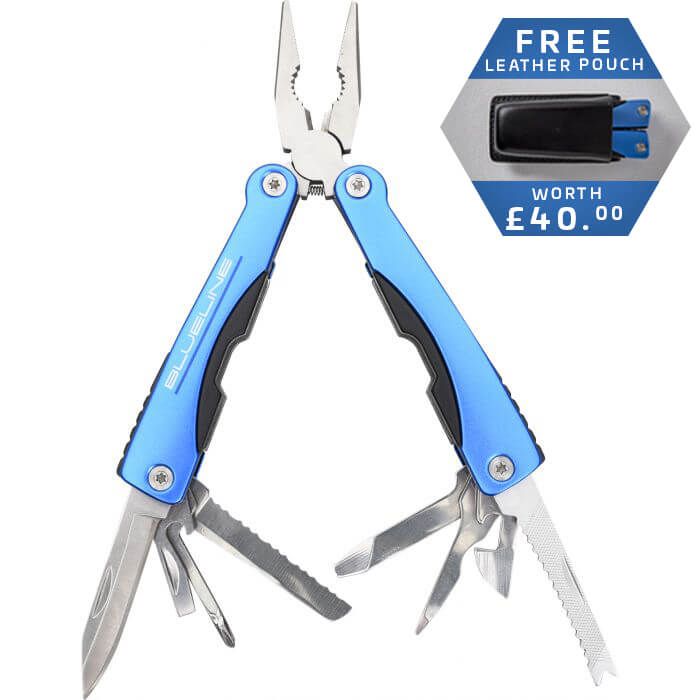
Above: Blueline Multi Tool
Marking Tools
- Chalk: Ideal for marking on roads or walls, especially for temporary signs or directions.
- Marking Tape: Highly visible and easy to deploy, it can cordon off areas or guide evacuees.
- Fluorescent Spray: Visible even in low light, it can highlight evidence or mark specific spots.
- Batons: Light batons are used to direct traffic.
Rope or Paracord
- Rescues: Can be used for pulling individuals from danger or rappelling during rescue operations.
- Barriers: Create temporary barricades or cordon off danger zones.
- Securing: Tie down loose items in windy conditions or secure doors and gates.
Critical Protective Gear
The frontline of any major incident is fraught with unseen dangers. As the old adage goes, it's better to be safe than sorry.
Ensuring that officers are well-protected from various hazards is not just a precaution but an imperative. The protective gear should cater to a wide spectrum of potential threats.
Gloves
In protective gear, gloves play a dual role, serving medical and operational needs.
- Latex Gloves: These are vital for medical interventions. They ensure that officers can administer first aid without the risk of contamination or transmission of diseases. Some individuals might be allergic to latex, so nitrile alternatives can also be considered.
- Heavy-Duty Gloves: Beyond medical situations, officers might need to handle rough or sharp objects, deal with fire, or come into contact with chemicals. Durable gloves, often made of materials like leather or reinforced synthetics, can protect hands from cuts, burns, and other injuries.
Respiratory Masks and Goggles
The air at a major incident site can be unpredictable. Respiratory protection is paramount, whether it's smoke from a fire, dust from a collapsed structure, or hazardous chemicals from a spill.
- Particle Masks: Useful against dust, smoke, or certain biohazards, these masks filter out particulate matter, ensuring officers don't inhale harmful substances.
- Gas Masks: In situations with chemical hazards or toxic fumes, a full-fledged gas mask, equipped with the right filter, can be a lifesaver.
- Debris Protection: In incidents involving explosions or collapses, flying debris poses a significant threat. Safety goggles shield the eyes from such hazards.
- Chemical Splashes: Chemicals can pose a danger when dealing with industrial accidents or certain criminal scenarios. Goggles ensure that any inadvertent splashes don't harm the eyes.
Summary
How to deal with a major incident effectively revolves around careful preparation and having the right tools and equipment in place.
The importance of a comprehensive major incident bag is self-evident. It houses an arsenal of tools and a shield against the unpredictable chaos of emergencies.
Those in the market for such critical equipment would do well to explore the best major incident bags and trauma bags for sale – including those by Niton999.


